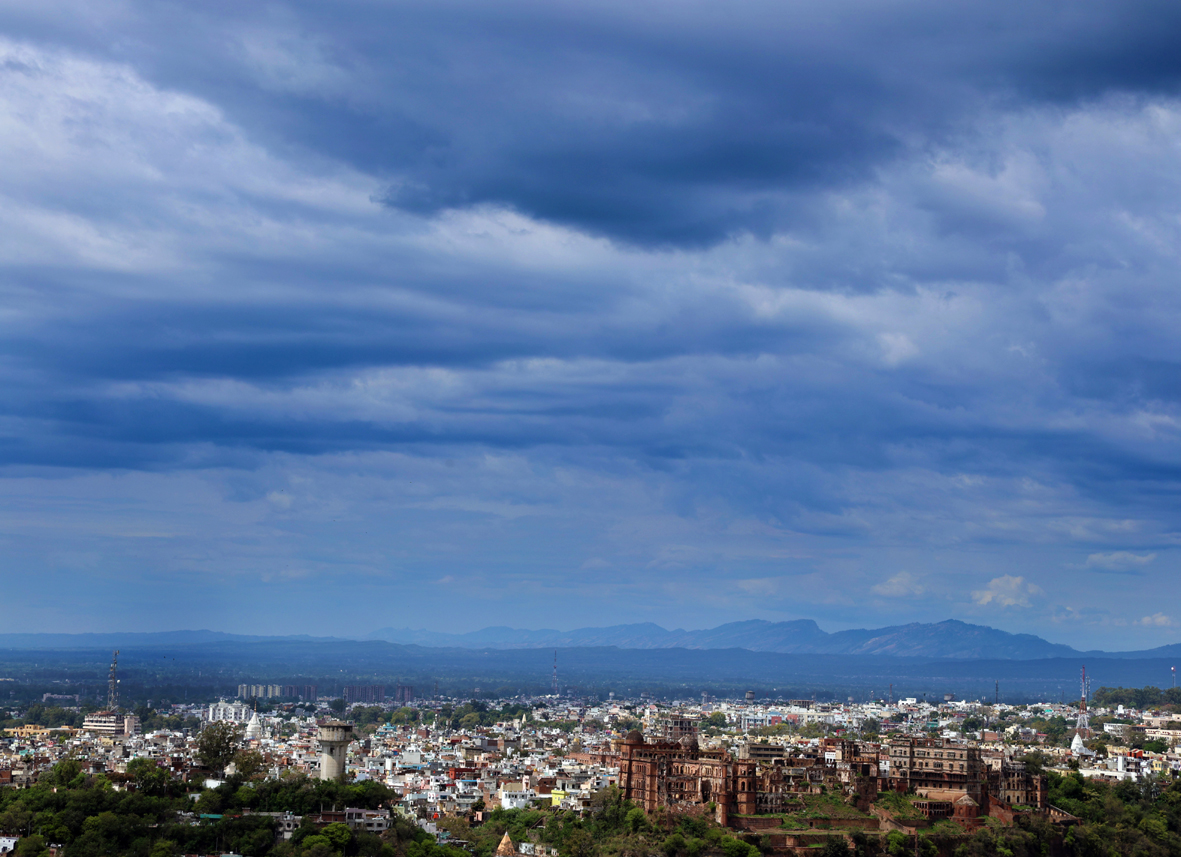Col Satish Singh Lalotra
‘The old order changeth yielding place to new and God fulfills himself in many ways lest one good custom should corrupt the world’—Alfred, Lord Tennyson.
Although I’ve been writing for quite a while about a plethora of topics that catch my interest or relate to my past and present experiences, I approach this relatively unexplored subject with eager anticipation. What perplexes me the most is the simultaneous ease and incongruity of outdated lifestyles coexisting with modern ones in the ‘City of Temples’ known as Jammu. This coexistence of antiquated lifestyles, discarded social norms, and practices that appear bizarre alongside the ultra-modern aspirations of the newly affluent class in Jammu provides ample material for social scientists to examine the process of ‘Social Reengineering’ taking place in this part of the Union Territory of J&K. Therefore, the primary motivation behind addressing this all-encompassing yet overlooked topic lies in exploring the intersection of modernity and tradition present in the city of temples. The year 1991, during the premiership of the late P.V. Narasimha Rao, marked a significant turning point in the lives of numerous Indians, ushering them into an era of LPG (Liberalization, Privatization, and Globalization)—a movement greatly propelled by his distinguished finance minister, Dr. Manmohan Singh. The arrival of the LPG framework set off a wave of consumer culture among the Indian populace, who had previously been accustomed to a limited market. Although Jammu was somewhat slower to adapt to the burgeoning consumerism, various factors—such as a growing population, increased pressure on living spaces, expansion of city limits, migration trends, and government initiatives to position the winter capital as a business hub—created an atmosphere that elevated the aspirations of its citizens to unprecedented levels.
It is well known that conflicts arising from cultural or religious identities serve as key factors for the ‘Clash of Civilizations.’ Renowned American political scientist Samuel P. Huntington hypothesized in his seminal work that future conflicts and fault lines will stem from this premise, with the ability to navigate these divides testing our ‘Salience’ in maintaining some semblance of societal balance on a grand scale. Recently, the ‘City of Temples’ has been grappling with this very ‘Clash of Civilizations,’ which encompasses a myriad of activities, locations, and lifestyles. The traditional ways of living among the people of Jammu have been confronted with the rapid pace of modern life, demanding swift decisions in various aspects—from employment to leisure activities. This shift necessitated a revolutionized transportation system, leading to significant improvements in Jammu’s road infrastructure, which was previously chaotic and outdated.
Just a few decades ago, the narrow, winding roads of the city were choked with an antiquated transport system consisting of old tempos, horse-drawn carriages, cycle rickshaws, and bullock carts. A recent notable advancement was the introduction of innovative e-autos and e-rickshaws as part of the Jammu Smart City Project (JSCP), which recently won the ‘National Award of Excellence in Urban Transport’ at the 17th Urban Mobility India Conference and Expo 2024 in Gandhinagar, Gujarat. The accolade, presented by Union Minister for Housing and Urban Affairs, M.L. Khattar, recognizes the project within the ‘City with Most Innovative Financing Mechanism’ category. What better validation could one ask for regarding a transformed transportation system in Jammu? About 800 low-income families in the city are now benefiting from this green initiative. The CEO of Jammu Smart City Limited, Dr. Devansh Yadav, and his team received the award, emphasizing three key objectives: providing economical end-mile connectivity, promoting pollution-free transportation, and enhancing employment opportunities for low-income families. When comparing these high-profile advancements with the previous decades marked by a deteriorating transport scenario in Jammu, the contrast is stark. Still, in certain outlying areas of Jammu, outdated transport models (such as tongas and tempos) remain in operation, illustrating the seamless fusion of antiquity with modernity in the overall tapestry of the city.
Jammu’s growing population first encountered non-resident Jammuites in the early 1990s, when many Kashmiri Pandits fled over the Pir Panjal mountains due to rising militancy. The landscape of the city transformed drastically as these displaced individuals settled in almost every corner, redefining the city’s limits in previously overlooked areas. This influx prompted city planners to revise their strategies, extending civic amenities and facilitating the creation of new settlements that overshadowed traditional living spaces in this city of temples. The older districts of Jammu bore traditional names that harked back to the Dogra royal lineage, such as ‘Fattu Chaugan,’ ‘Purani Mandi,’ ‘Pakki Dhaki,’ ‘Gummat,’ and ‘Peer Kho.’ These names still carry a sense of historical resonance today, with many inhabitants clinging to their connections to a bygone era encapsulated within Dogra history. The juxtaposition of these historical enclaves with the new high rises across the Tawi river only emphasizes the inevitable clash of cultures. Even now, one can spot tarot card readers with parrots and unlicensed practitioners providing dubious dental services along the roads leading to ‘Gummat,’ attempting to attract passersby with their flair. The ongoing business of these quacks serves as a testament to the steadfast faith that local residents maintain in longstanding practices, exemplifying the coexistence and merging of the old with the new. This situation indicates that despite the constant onslaught of modern media, long-standing traditions remain firmly rooted in the mindset of Jammu’s populace.
The emergence of ‘mall culture’ in the city of temples is yet another dimension that has drawn the masses away from traditional shopping venues like the iconic ‘Raghunath Bazar’ and ‘Link Road’ to the flourishing malls that have become the preferred shopping destinations of the younger generation. With a wealth of options available, today’s youth enjoy an abundance of choices, yet this shift has had adverse effects on the time-honored relationships between customers and shopkeepers, founded on mutual trust, camaraderie, and respect for value. These malls, known for their rapid gratification, often lack the integrity of personal relationships that characterized previous transactions, consequently influencing the behavior of younger shoppers who have begun to emulate this demand for instant satisfaction in their personal and professional lives too. The diminishing personal interaction during commercial exchanges has resulted in a significant ‘transactional loss’ that is reflected in today’s society. Additionally, this burgeoning mall culture has driven up real estate prices in Jammu to inflated levels, prompting unscrupulous builders to encroach upon government lands and mislead potential buyers, ultimately defrauding them of their earnings—creating a vicious cycle of gratification without resolution in sight. However, even amidst these modern consumerist trends, certain venerable establishments like ‘Pahalwan di Hatti’ and ‘Billu di Hatti’ continue to reign supreme, serving some of the best local delicacies on the banks of the Ravi river. The enduring popularity of these traditional dining spots over newer eateries illustrates the discerning nature of consumers who are willing to dig deep into their pockets for quality.
In light of these developments, local authorities have also recognized the need for a comprehensive facelift for the city while preserving its historical significance that has long characterized this region of Dogra land. The Jammu Master Plan and the ‘Smart Jammu City Project,’ which embodies the philosophy of ‘Of the People, For the People, and By the People,’ represent a vision for sustainable and healthy living—a city where the ‘happiness quotient’ is paramount. New initiatives include vertical gardens (from KC Chowk to Dogra Chowk), refuse compactors, wayfinding signage, smart Anganwadi centers, cycling paths, illuminated facades of Bahu Fort, Tawi Riverfront enhancements, and a cable car system, all of which promise to reinvigorate the lifestyle of Jammuites. As Lord Tennyson aptly noted, ‘The old order changeth yielding place to new and God fulfills himself lest one good custom should corrupt the world.’ Naturally, when ancient customs meet contemporary progress, a cacophony is bound to arise. Yet, it is precisely this wisdom and resilience of the people of Jammu that allows them to embrace both elements with grace, transforming what could be noise into a harmonious symphony.
(The writer is a retired army officer.)


Leave a Reply